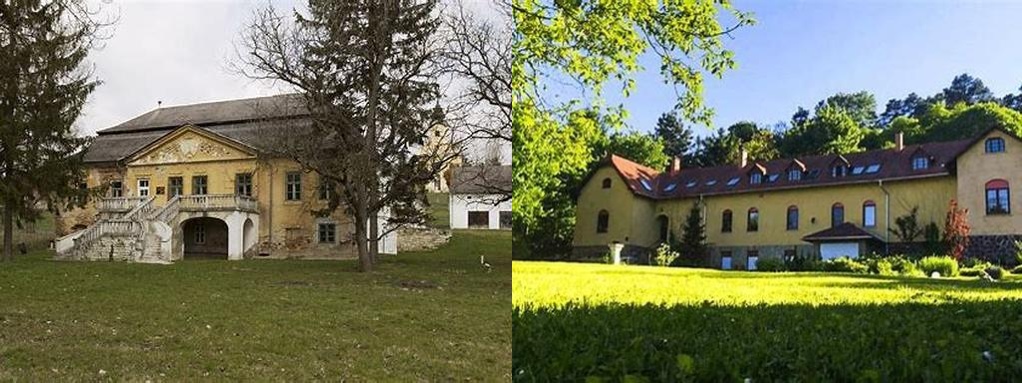
Fáy-kúria sits quietly in the small village of Méra, not too far from the bustling city of Miskolc, yet it feels like a world away. As you stroll down the gently winding lanes of northeastern Hungary, the countryside opens into a scene that hasn’t much changed over the centuries: rows of leafy trees, vineyards stretching to the horizon, and ancient, cozy villages that look as though they’ve leapt out of a storybook. But nothing quite prepares you for the warm, timeworn grandeur of the mansion itself. The Fáy Mansion isn’t just another noble villa lost to history; it represents the intersection—sometimes lively, sometimes heartbreakingly quiet—of literature, music, social progress, and the enduring Hungarian custom of friendship and hospitality.
If there’s anything to know about the mansion, it’s the name András Fáy. Born in 1786, Fáy was an accomplished writer, politician, lawyer, philanthropist, and above all, a person committed to social change. In Hungarian literary circles, he’s often called “the father of the Hungarian savings bank”—yes, he founded the first one in 1839—which is hardly the kind of legacy you expect to come with such an enchanting country home. The Fáy-kúria stands as proof that some people can, in fact, do it all. Under his roof, the mansion became an intellectual salon—a place where poets, writers, and musicians would gather to debate ideas and perform for one another. The walls of this home have surely heard more laughter, music, and heated discussion than most.
Walking through the bright, spacious rooms, you’ll find hints and echoes of lives finely lived. Original wooden beams, elegantly faded wallpapers, delicate fireplaces, and treasured manuscripts are all reminders of a 19th-century Hungary eager to burst into modern life, with legends of literature playing their part. The dining room has a very particular energy—honestly, you half-expect a group of Romantic-era poets to burst in, raising a midnight toast to art, love, and revolution. It’s not random longing: Mihály Vörösmarty, one of Hungary’s greatest poets and Fáy’s close friend, was a regular visitor here. If you’re lucky (or have a good imagination), you can practically hear the echoes of debates and poetry readings drift through the summer air.
The grounds surrounding Fáy Mansion also tell stories. There’s a tradition of hospitality at work here that’s almost impossible to replicate in the modern age. Guests once gathered beneath the old chestnut trees, drinking the region’s famous wine and watching the sun set over the Zemplén hills. Fáy wasn’t just a host—his vision for society called people together, encouraging them to blend conversation, art, resistance, and good food in equal measure. If you decide to wander outside, you’ll see vistas that haven’t changed in a century, and paths once taken by thinkers whose names still line school textbooks: Ferenc Kölcsey, Sándor Petőfi, and Miklós Révai all took shelter and solace here.
But Fáy-kúria isn’t only about the past. Today, the mansion offers an unusual kind of silence—the peacefulness you find when history and nature exist side by side. Locals sometimes pop in to share tales passed along from grandparents: anecdotes of Midsummer music, heated card games, or the day the poet Vörösmarty composed under a walnut tree nearby. There’s something magnetic and gentle about the atmosphere, and the staff are as enthusiastic about their heritage as they are about making you feel at home. Don’t be surprised if someone recommends a favorite hiking path or shares a family recipe for mushroom paprikash.
For anyone interested in architecture, Fáy Mansion is a subtle delight. The elegant simplicity of the neoclassical façade draws you in, but it’s the country charm that makes you want to linger. Sprawling lawns and a sun-dappled garden invite hours of aimless wandering. Inside and out, the house makes clear that it was never about flashy ostentation: the Fáy family believed in substance over show, in building a sanctuary shaped by love for literature, friends, and good conversation.
You leave Fáy-kúria with a sense of gentle nostalgia; you won’t find any loud exhibits or sharp relocations into modernity here. Instead, you’re reminded how comfort, creativity, and the daring to dream bravely have always been part of Hungarian life. And as you step back outside, all the history and stories seem to travel with you through Méra’s rolling hills, whispering that some places, by refusing to chase modern fads, become even more timeless.





